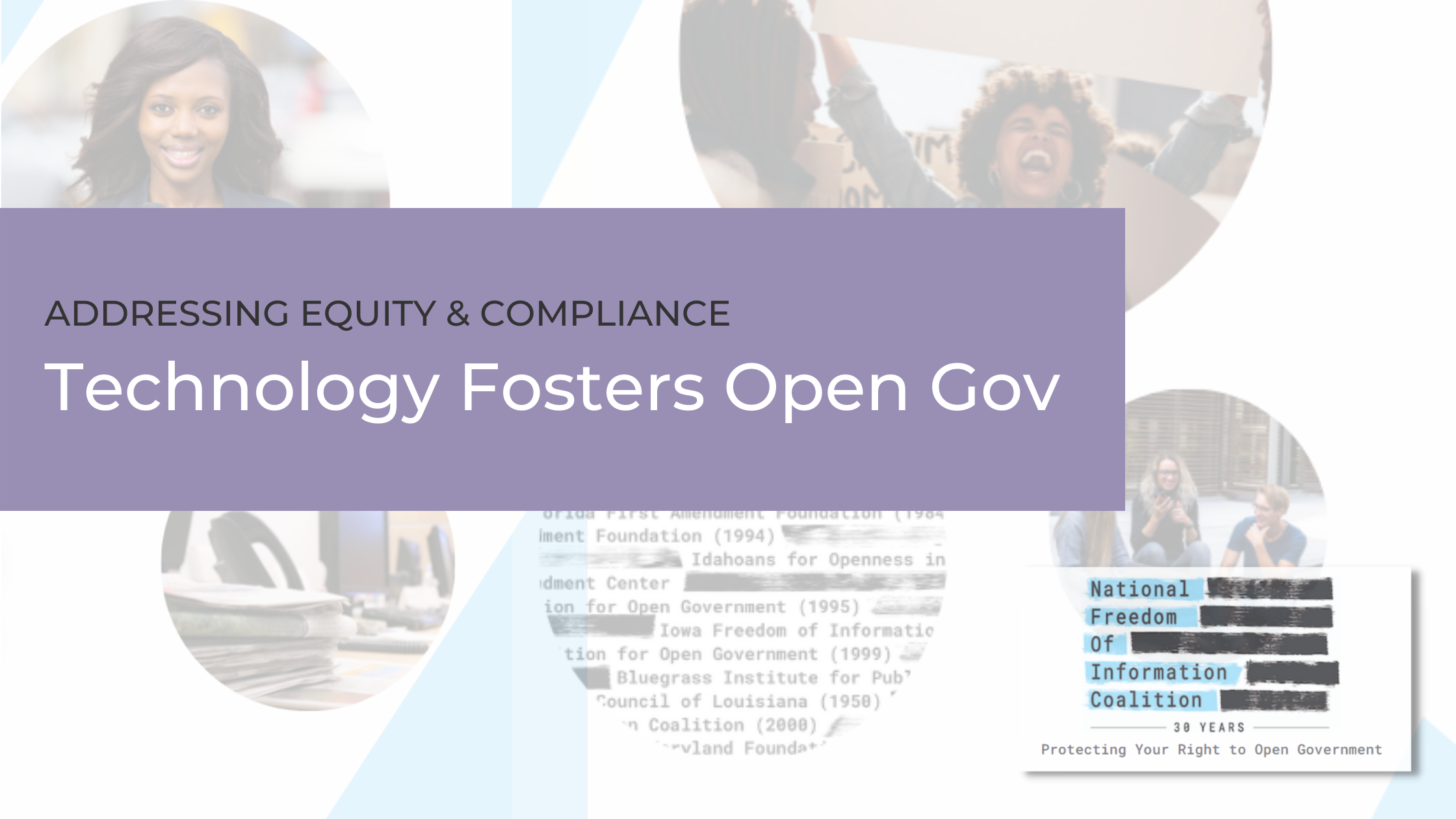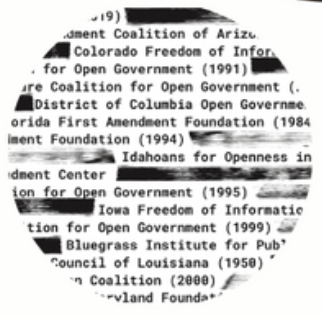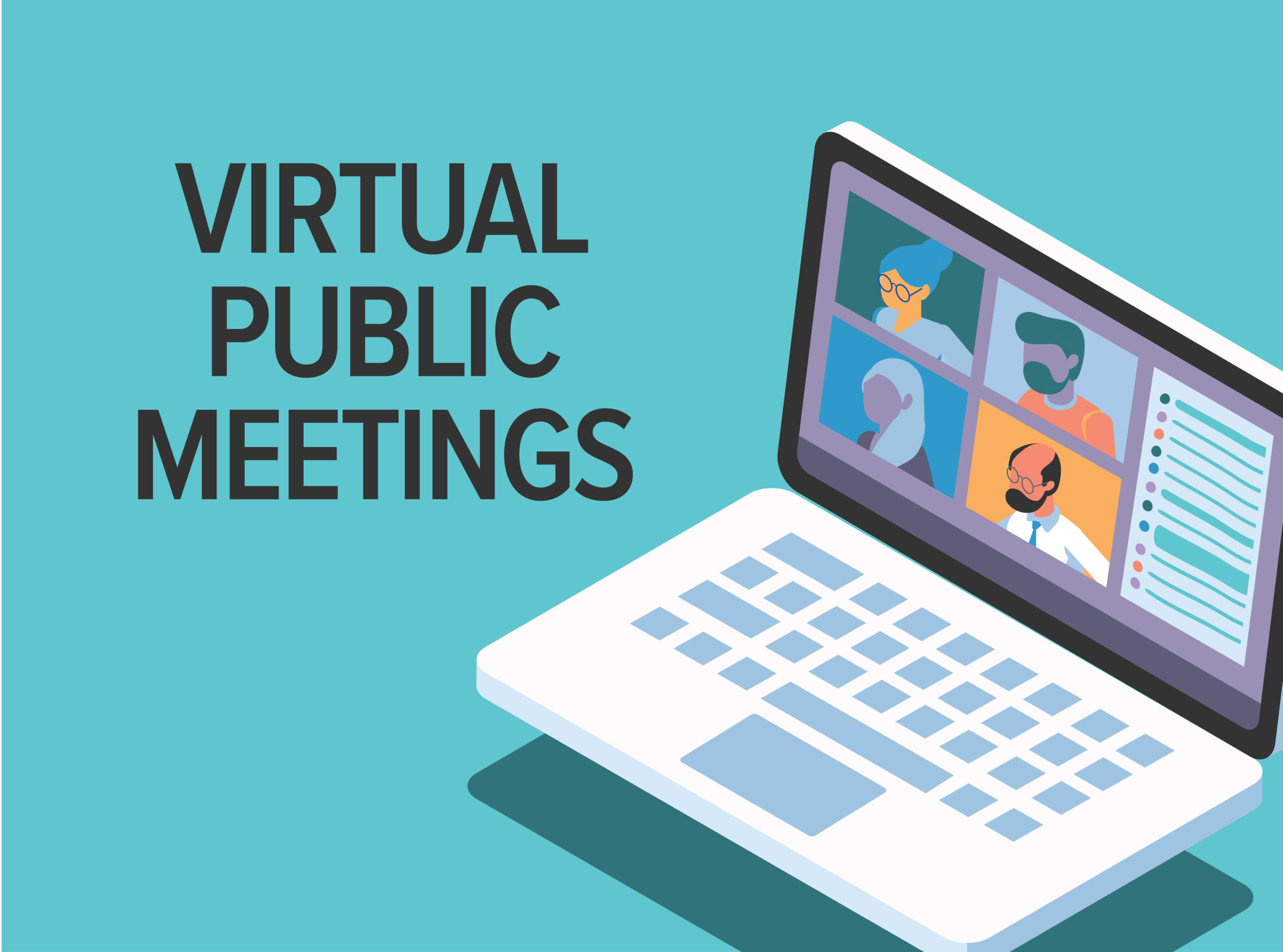
PublicInput had the pleasure to join a panel discussion at the 2021 National Freedom of Information Coalition (NFOIC) online Summit. The panel discussion, moderated by Valerie Lemmie, Directory of Exploratory Research at the Kettering Foundation. Panelists included Amanda Kastl (Countywide FOIA officer for Fairfax County, VA), Luke Britt (Indiana Public Access Counselor), Martin G. Reynolds (Co-Executive Director of the Maynard Institute), and myself.
The panel discussion focused on how a more informed citizenry fosters democratic practices and builds trust, especially by those who feel disenfranchised and/or marginalized from the governance process.
There is a crisis of confidence in our democracy. Citizens feel disconnected and that their voices are not heard. Political polarization and isolation due to the pandemic make it harder for people to connect—build relationships of trust and work together on shared problems. One way to build trust is to ensure people have accurate information about the decisions actions/taken by public officials.
VALERIE LEMMIE, DIRECTOR OF EXPLORATORY RESEARCH, KETTERING FOUNDATION

How does PublicInput foster public engagement and democracy through the provision of public information on government actions, especially with those who are often unaware of how government works and how issues are made?
When it comes to fostering transparent public engagement our company believes that collaborative democracy really does succeed through technology.
We all know the challenges of the last year have resulted in unimagined change for those working out front. The pandemic is just one example of the complex issues that require responsive outreach and engagement with the public.
Success of the public experience really hinges on an open and transparent process and the ability to “move” quickly and easily in times of uncertainty.
At PublicInput, our job is to provide a platform that allows governments and practitioners to not only engage the public in a format that suits them best, but also to give them ways to reaching beyond the usual voices, lower barriers to participation, and on the backside, help them to be agile in quickly capturing, analyzing, and reporting the data and findings. Doing this helps our users to compile all that rich information from the community together to help inform the decision-making process.
Using technology to build public trust by adding transparency and accessibility while amplifying voices is how we help to align community values with future plans…..which I think is the best way to leverage community input.

Can you share some information about how your government users have adapted to the recent challenges presented by social distancing?
Last year was a challenge. . . we all know that. Many of us acknowledged the ongoing nature of uncertainty associated with the pandemic. What we also knew to be true was that the requirements to facilitate an open engagement process had not changed.
Over the course of the year we saw many of the PublicInput users, who had originally purchased the PublicInputour software for surveying purposes, were now pivoting to take advantage of our virtual and hybrid meeting technologies.
We released a quick poll across our government and consultant users to see what was happening. And what we learned was that:

And while this is only a snapshot of the full scope of US activity. It became really clear as we moved into 2021 that a new era of open meetings had arrived. And that meant virtual was now expected.
Addressing Equity and Compliance Concerns with Technology
The challenge in overcoming the perceived disconnect between government and the community is not a new topic.
Governments know that having actual data to support anecdotal information is very powerful and the purpose of meaningful engagement is to test and validate anecdotal evidence and turn it into actionable insight.
Over the last 18 months we have observed a strong shift in the technology needs of our users who were looking for ways to increase public trust and efficiently maintain compliance using open and transparent public meeting practices. The demands for change included the ability for the public to bear witness, access and review records and lend their voice in the decision-making process.
For us that translated into technology innovation that allows our users to offer following compliant meeting and engagement features:
-
- Live multilingual closed captioning
- Automated meeting transcription that is immediately available and compiles in-meeting discussion, chat, and phone attendee comments
- Equity mapping features that overlay socioeconomic data with participant information to aid in the process of representative sampling.
Want to learn more about how your FOI process can be enhanced and supported by technology?



